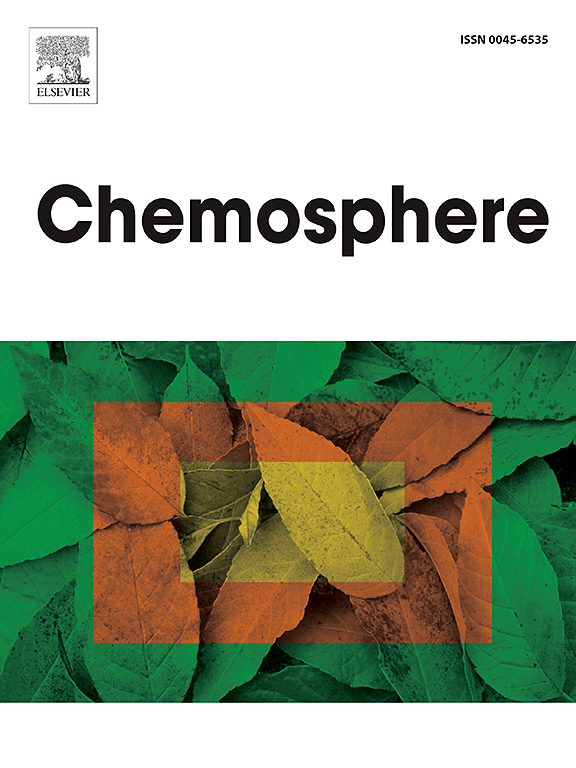用硅-体外试验方法评价阻燃剂磷酸二乙酯铝的皮肤毒性
IF 8.1
2区 环境科学与生态学
Q1 ENVIRONMENTAL SCIENCES
引用次数: 0
摘要
阻燃剂(FRs)是一组用于不同产品以提高消防安全的化学品;然而,其中许多对人类健康产生负面影响,鼓励使用更安全的替代品。二乙基膦酸铝(AlPi)是一种潜在的替代品;然而,仍然需要缩小关于人体毒性的数据差距并加强对机理的理解。本研究使用硅模型(OECD QSAR工具箱,Toxtree)和人类角质细胞模型(HaCaT细胞系和重建人类表皮(RHE)模型)的多生物标志物方法评估了AlPi的皮肤毒性潜力。我们的研究结果显示,在无细胞毒性浓度(30、60、120 μg/ml)暴露于AlPi的HaCaT细胞中,活性氧(ROS、H2DCFDA)或促炎细胞因子(IL-6、IL-8、IL-10、IL-1β、IL12p70、TNF)没有显著增加。这表明AlPi不会诱导皮肤氧化应激或炎症反应。此外,计算机预测和体外分析(HaCaT - IL-6;OECD TG 439与SkinVitro-RHE)没有将AlPi归类为皮肤致敏剂或皮肤刺激物。关于DNA的变化,暴露于alpi的HaCaT细胞没有显示出显著的γ-H2AX水平;然而,这种FR增加了5-羟甲基胞嘧啶(5-hmC)和TET1的表达水平,TET1是一个参与DNA甲基化调节的基因。总之,大多数生物标志物反应表明,AlPi对皮肤的毒性作用最小;然而,需要进一步的研究来更好地了解其对DNA甲基化影响的生物学后果。本文章由计算机程序翻译,如有差异,请以英文原文为准。

Evaluating dermal toxicity of the flame retardant aluminum diethylphosphinate by in silico-in vitro testing strategy
Flame retardants (FRs) are a group of chemicals used in different products to improve fire safety; however, many of them negatively impact human health, encouraging the use of safer alternatives. The aluminum diethylphosphinate (AlPi) is one of the potential alternatives to harmful FRs; however, close data gaps on human toxicity and enhanced mechanistic understanding are still needed. This study evaluated the dermal toxicity potential of AlPi using in silico models (OECD QSAR Toolbox, Toxtree) and a multi-biomarkers approach with human keratinocyte models (HaCaT cell line and reconstructed human epidermis (RHE) model). Our findings revealed no significant increases in reactive oxygen species (ROS, H2DCFDA) or pro-inflammatory cytokines (IL-6, IL-8, IL-10, IL-1β, IL12p70, TNF) in HaCaT cells exposed to AlPi at non-cytotoxic concentrations (30, 60, 120 μg/ml). This suggests that AlPi does not induce oxidative stress or inflammatory responses in the skin. Additionally, in silico predictions and in vitro assays (HaCaT – IL-6; OECD TG 439 with SkinVitro-RHE) did not classify AlPi as a skin sensitizer or skin irritant. Regarding changes in DNA, AlPi-exposed HaCaT cells did not show significant levels of γ-H2AX; however, this FR increased the level of 5-hydroxymethylcytosine (5-hmC) and TET1 expression, which is a gene involved in the regulation of the DNA methylation. In summary, most biomarker responses indicated that AlPi poses minimal toxic effects on the skin; however, further research is needed to understand better the biological consequences of its effect on DNA methylation.
求助全文
通过发布文献求助,成功后即可免费获取论文全文。
去求助
来源期刊

Chemosphere
环境科学-环境科学
CiteScore
15.80
自引率
8.00%
发文量
4975
审稿时长
3.4 months
期刊介绍:
Chemosphere, being an international multidisciplinary journal, is dedicated to publishing original communications and review articles on chemicals in the environment. The scope covers a wide range of topics, including the identification, quantification, behavior, fate, toxicology, treatment, and remediation of chemicals in the bio-, hydro-, litho-, and atmosphere, ensuring the broad dissemination of research in this field.
 求助内容:
求助内容: 应助结果提醒方式:
应助结果提醒方式:


